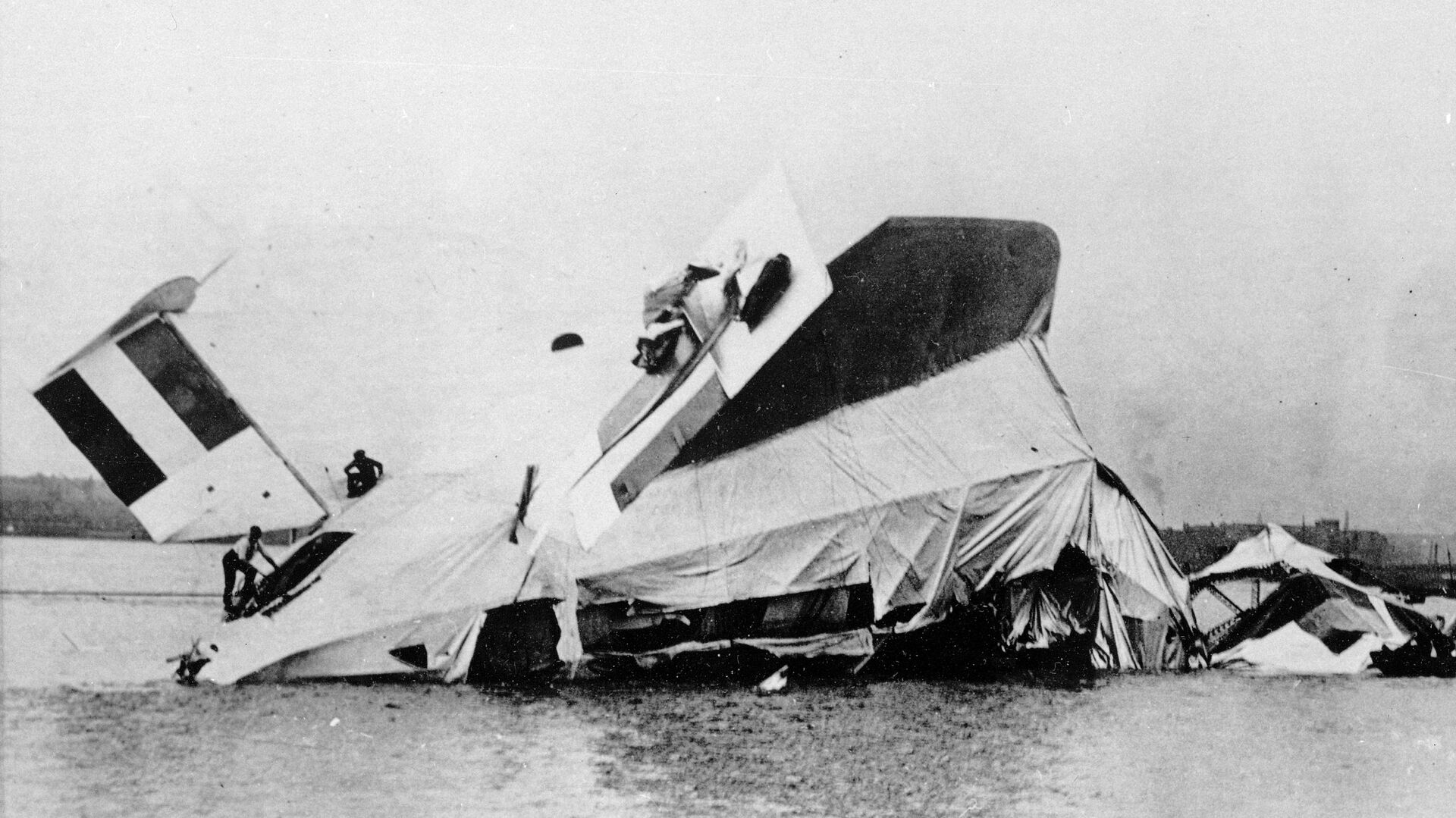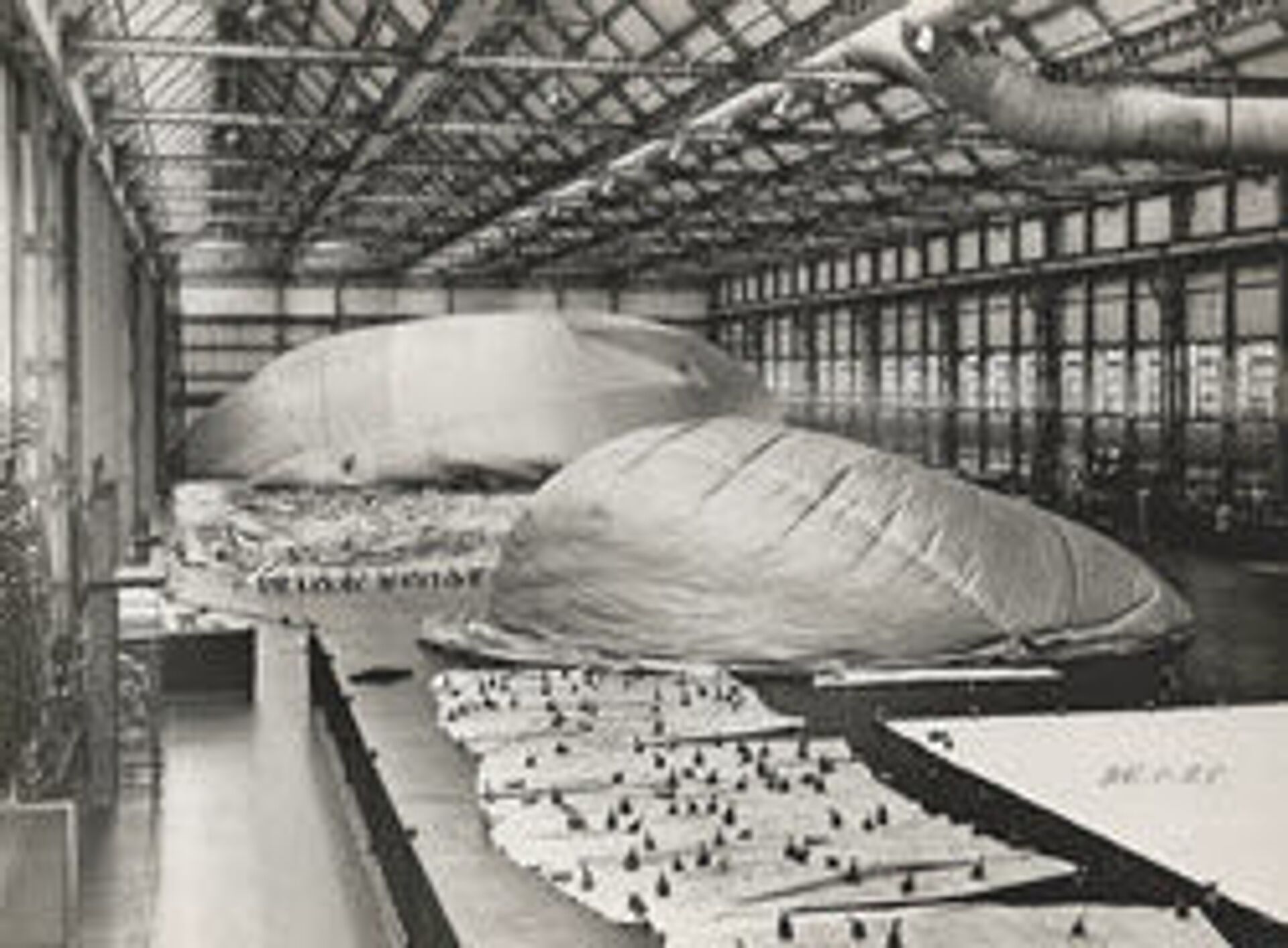Why the R-38 Disaster 100 Years Ago Was a Bad Omen For Planned British Imperial Airship Network
11:26 GMT 24.08.2021 (Updated: 15:15 GMT 28.05.2023)

© AP Photo
Subscribe
On 24 August 1921, the R-38 airship crashed into the Humber Estuary in the north of England, killing 44 people. It was the first of a series of disasters which would ruin the airship industry’s reputation and lead to its ultimate demise.
When the R-38 airship crashed 100 years ago on 24 August it made news headlines in Britain, but the 44 deaths were nothing to a nation, which had come through a war that had claimed more than a million lives.
But the disaster did put an end to the Royal Navy’s plans to use airships for aerial reconnaissance.
Alastair Lawson, chairman of the Airship Heritage Trust, explained: “During the First World War the Germans used Zeppelin airships to bomb London. It was the first time Britain had been bombed from above. People had always sent their children off to war but they had never expected to be in danger at home”.
“They did some damage but it was a psychological threat, rather than a real threat”, he added.
Mr Lawson said some of the Zeppelins had been shot down or crashed intact and this enabled British military engineers to work out how they had been built.
By 1921, the Royal Navy had its own airships and the hope was that they could be used to see over the horizon and give the Grand Fleet the opportunity to spot a threat or to pursue the enemy.
— Ireland Between Her Wars (@131Weeks) August 23, 2021
The R-38 had actually been sold to the United States and was known by them as ZR2.
On 24 August 1921, it had 17 US Navy and 32 Royal Navy crewmen on board as it left Howden in Yorkshire for trials over the North Sea.
Mr Lawson takes up the story: “It was supposed to fly to Norfolk but it was fogged in. They were doing more trials and were waiting for the fog to clear. They were coming back to Howden and went over the estuary. They did a tight turn at a lower height than usual. It fractured a petrol pipe and the petrol vaporised. A spark from the electrical circuit ignited the petrol and blew the front of the ship”.
The R-38 plummeted into the cold waters of the Humber estuary near the Port of Hull.
— Mike Covell (@MikeCovell) August 22, 2021
Mr Lawson said: “The tail didn’t ignite and floated down. There were five survivors in the tail but those in the front all died”.
A memorial to the 16 Americans and 28 Britons who died can be found in Hull’s Northern Cemetery.
But while the R-38 ended the British military’s belief in the potential of airships, it did nothing to dampen the enthusiasm of commercial interests, who believed they could be the answer to long-distance travel.
Mr Lawson said that in the 1920s and 1930s airships had a much longer range than planes and were much quicker than ships.
He said: “In 1927, the Graf Zeppelin flew from Germany to Tokyo in one hop. It could fly around the world in four hops. It was then that airships really started to capture the world’s imagination and there was huge excitement. They were the Concorde of their day”.

The R-101 airship under construction
© Photo : Airship Heritage Trust
There was a belief in London that airships could be used to link up parts of the British Empire with the homeland.
“It was called the Imperial Communications Scheme and it was a plan to link up the Commonwealth by airship. To link up South Africa, Canada, New Zealand, Australia, and India. It would normally take six weeks by ship to get from London to India. A plane could do it in 21 hops but an airship could do it in two hops and unlike planes they could travel at night”, said Mr Lawson.
At huge hangars in Cardington, north of London, giant airships were constructed for global travel.

MPs in the lounge of the R-101 airship in 1929
© Photo : Airship Heritage Trust
The R-100 flew to and from Canada successfully several times, while the R-101 was designed to fly to Karachi, in what was then British India.
In October 1930, the R-101 crashed in France, en route to Karachi, and 48 of those on board died, including the secretary of state for air, Lord Thomson.
That was the end of the imperial airship network project, but the airship industry soldiered on for another seven years.
But in May 1937, the luxury German airship Hindenburg exploded as it came in to land in New Jersey, killing 36 of the 97 people on board and injuring many more.
The disaster was caught by newsreel cameras and the images were flashed around the world. This was the death knell for commercial airship travel.
The Hindenburg caught fire because it was filled with highly flammable hydrogen, rather than helium which was much safer but harder to come by as it was not naturally occurring, but a by-product of the oil and gas industry.
Despite the R-38 disaster, the US Navy persevered with airships and believed they could be used not only for aerial reconnaissance, but also as flying aircraft carriers, with biplanes attached to their underbellies.
But in 1935, the USS Macon crashed, two years after the USS Akron had suffered a similar fate and the Americans washed their hands of airships.
Mr Lawson said that ironically, airships could possibly have given the Americans early warning of the Pearl Harbour attack.
“They might have seen it coming. The Americans had big helium reserves but they had phased out military airships”, he said.
Since the Second World War, there have been various airship projects mooted - in the 1950s, Goodyear used them for advertising, and in the late 1970s British businessman Roger Monk set up Airship Industries and planned to use them as natural gas transporters.
But Airship Industries was later bought by Australian businessman Alan Bond, who switched to passenger airships, but without success and the company went into administration in 1990.
The Airship Heritage Trust continues to campaign for the preservation of the historic hangars at Cardington.

